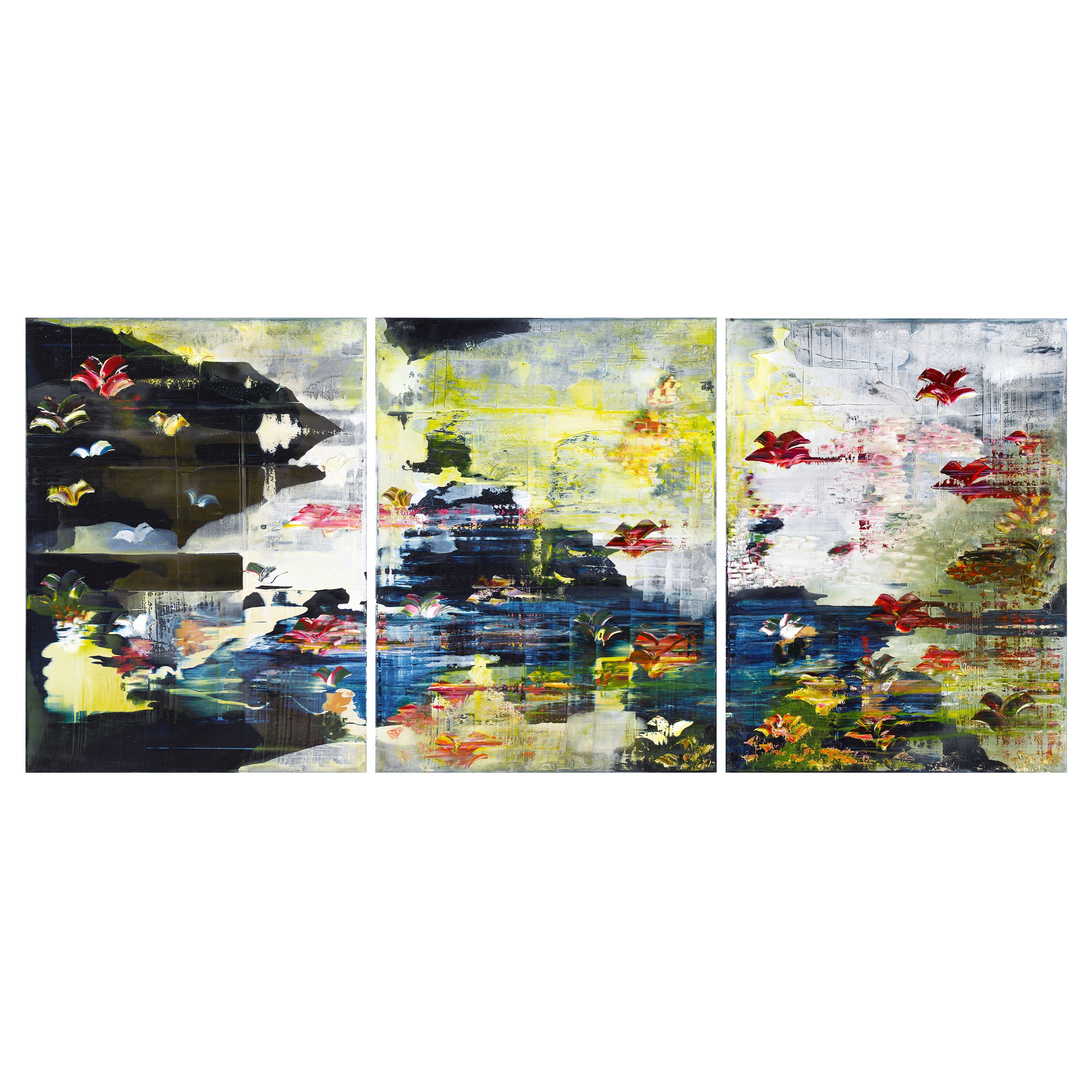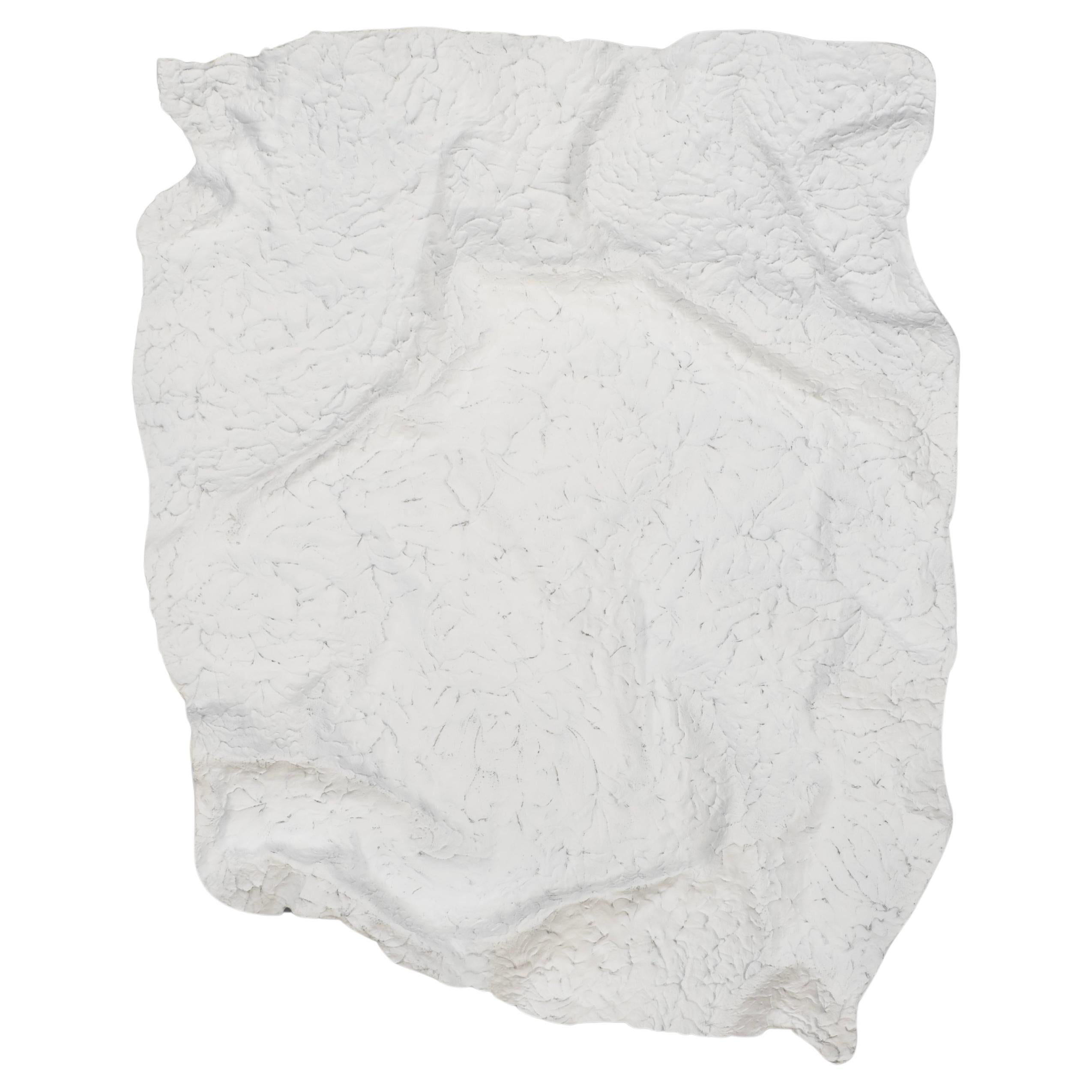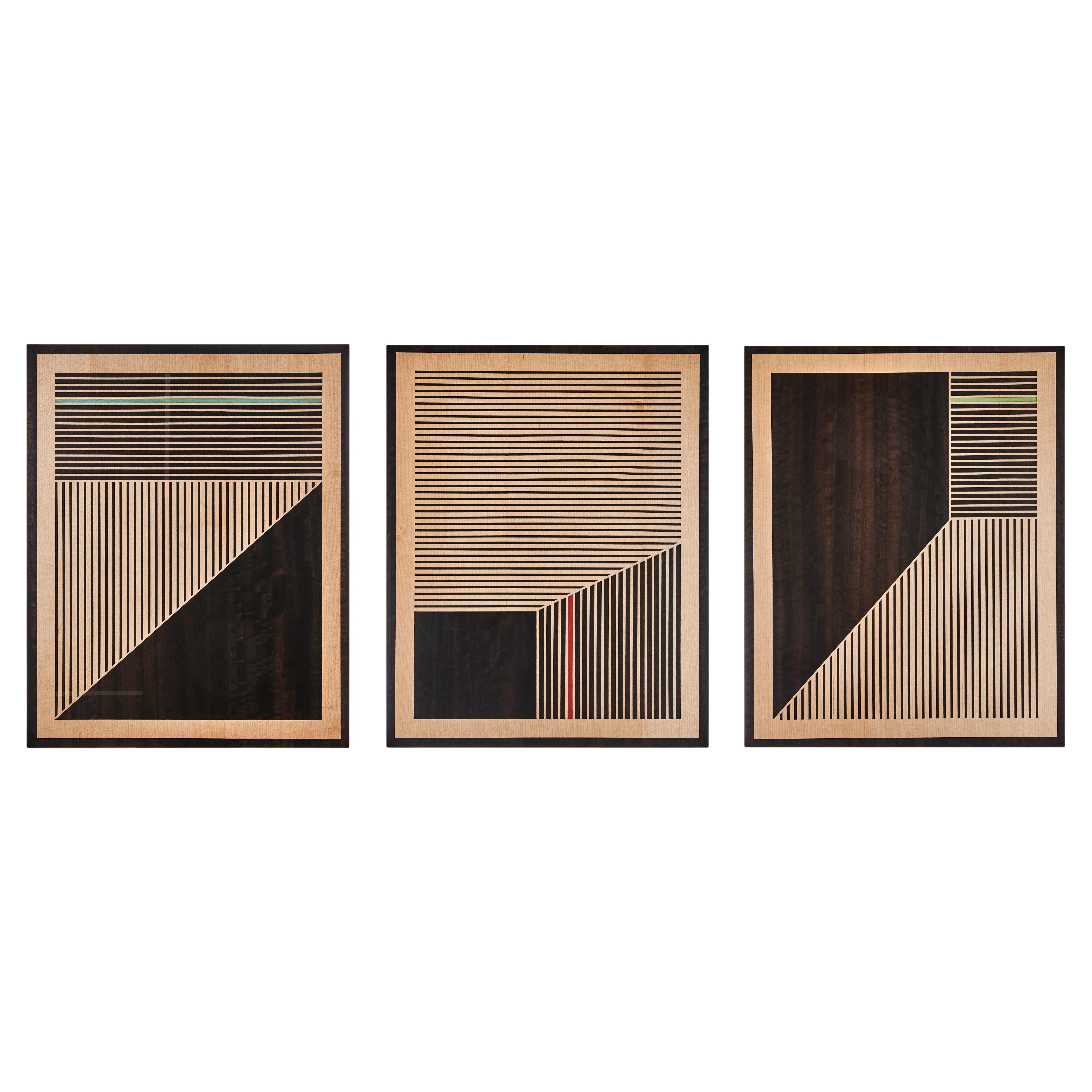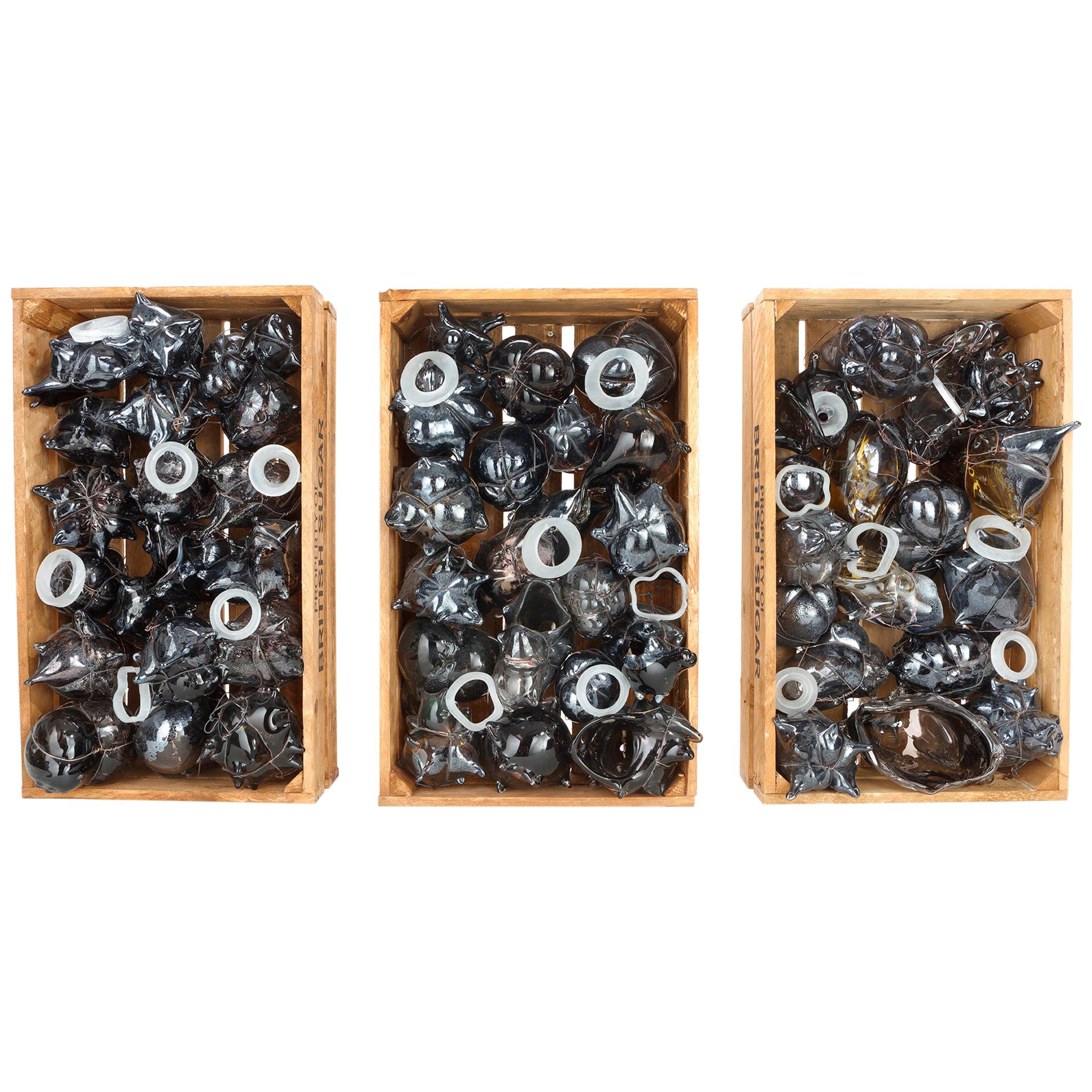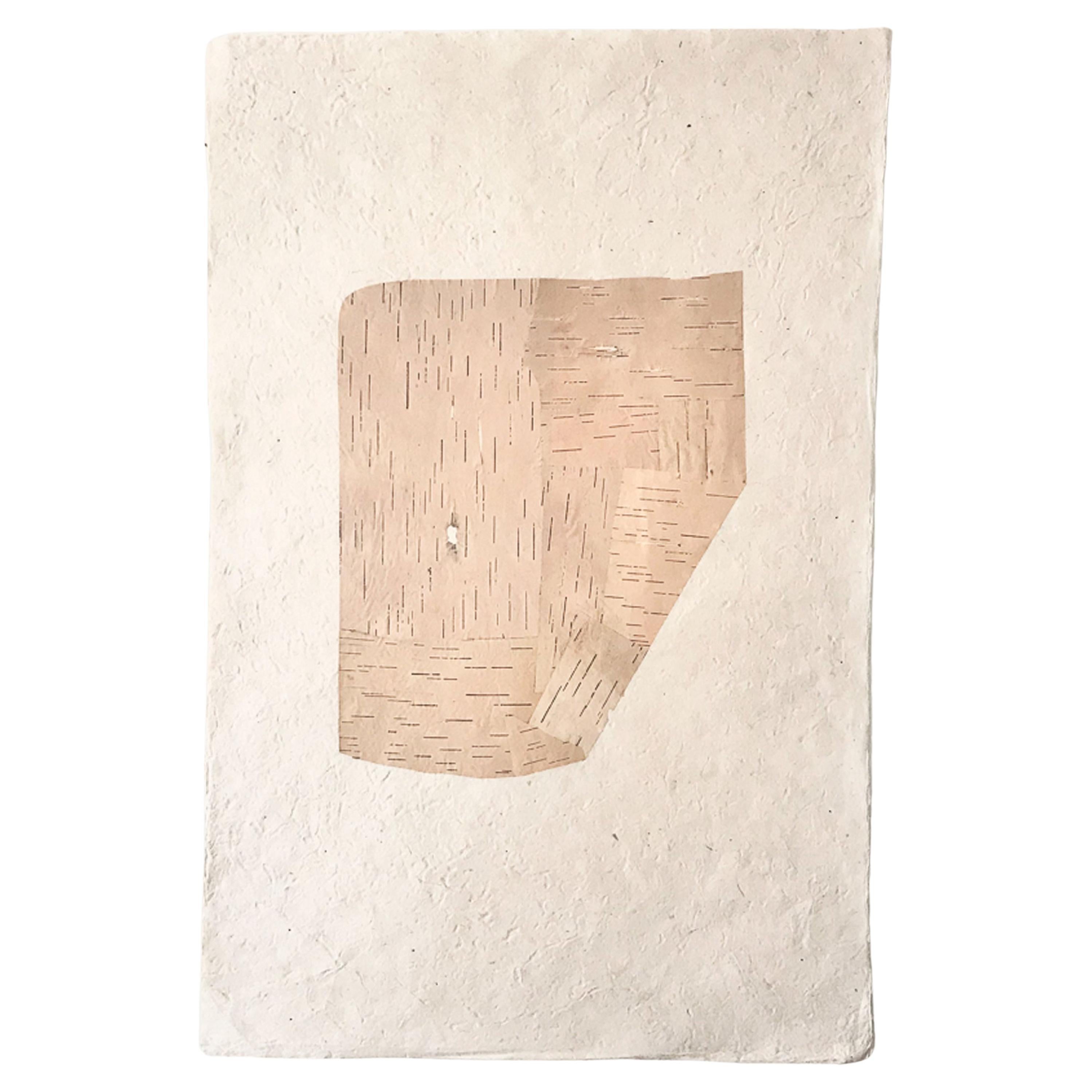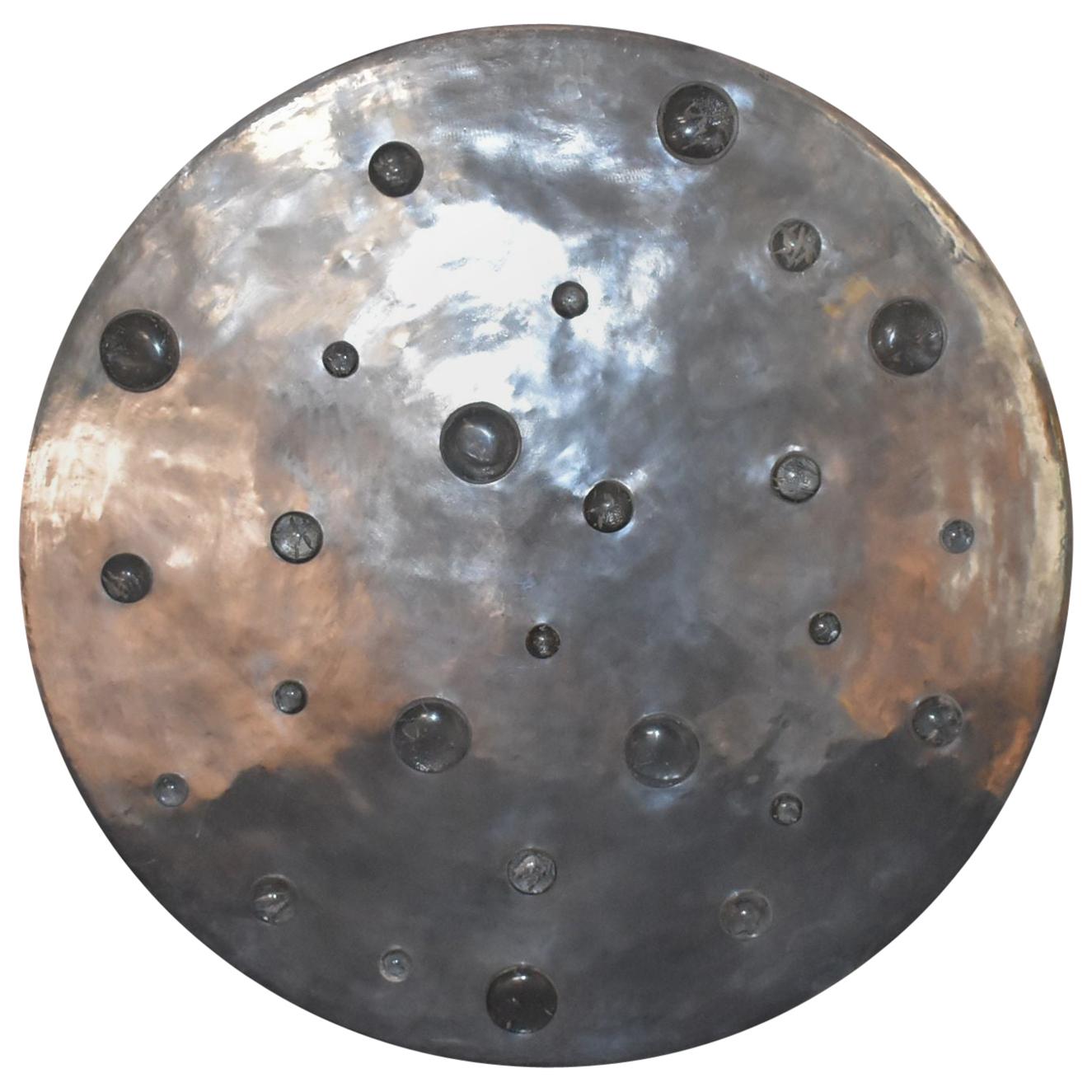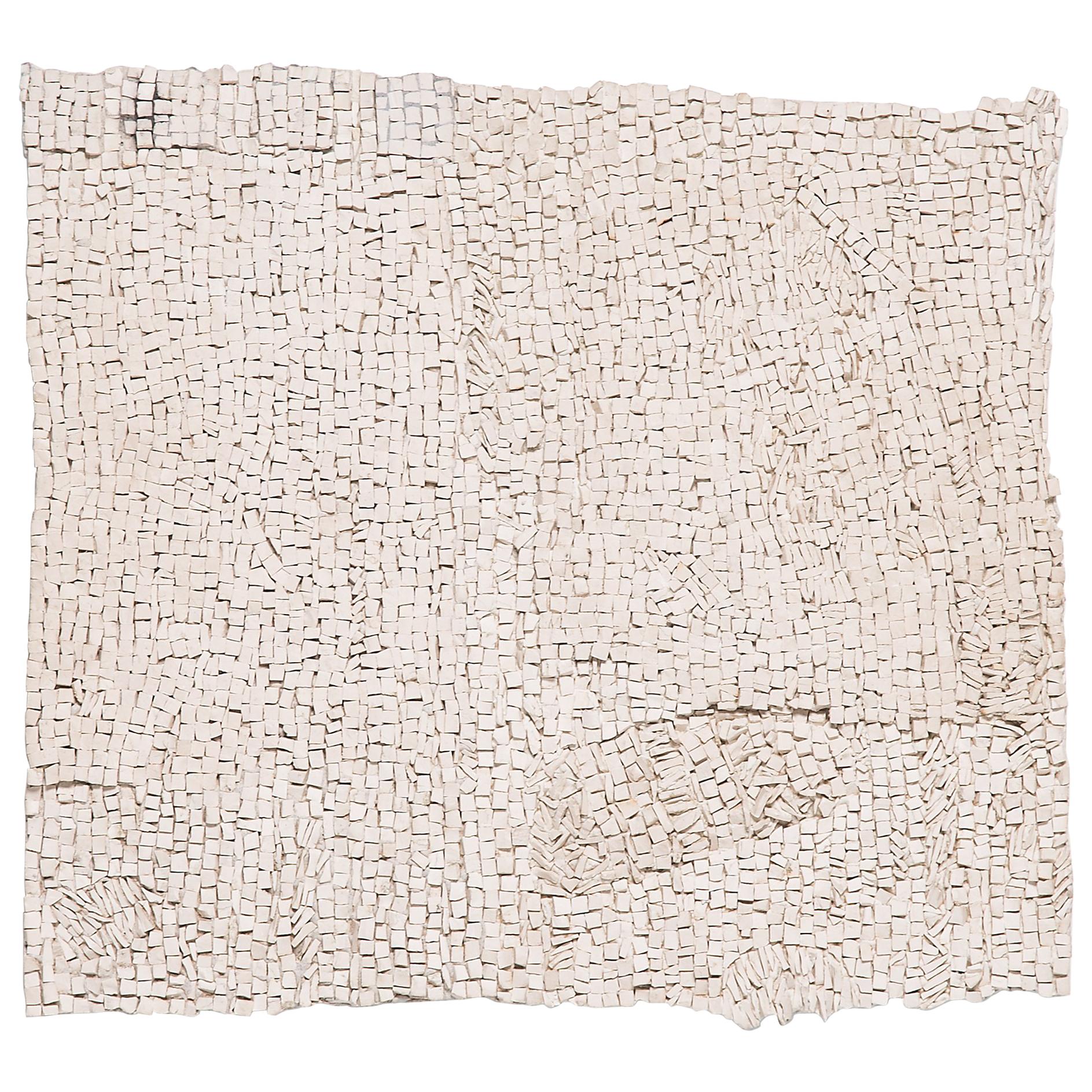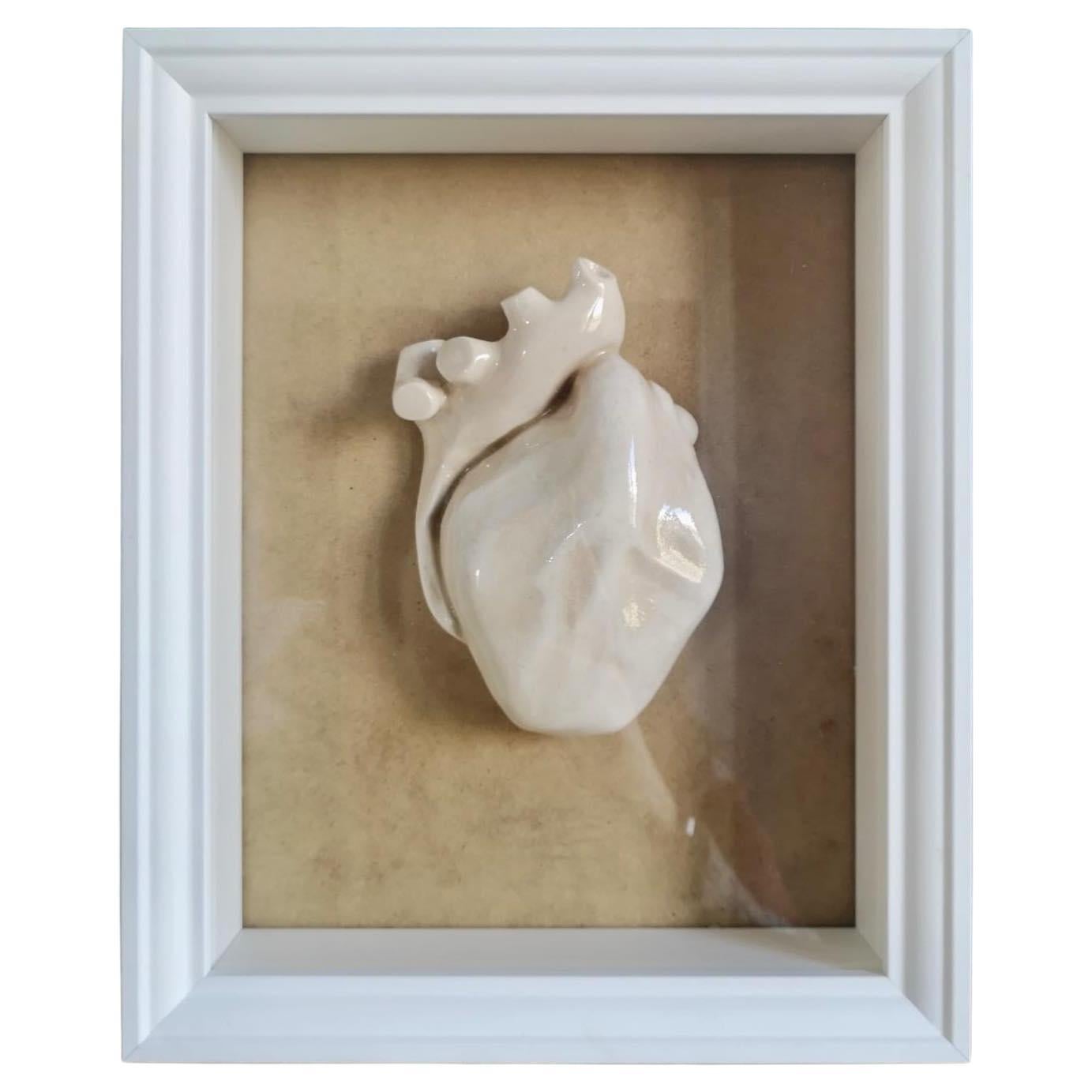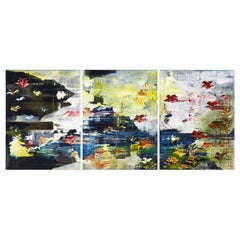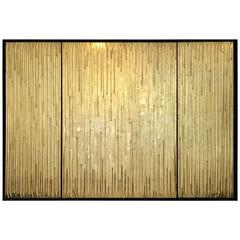
Large Triptych in Gold and Resin, the Flow of Time, Unique Piece by Alfred Sfez
View Similar Items
Want more images or videos?
Request additional images or videos from the seller
1 of 5
Large Triptych in Gold and Resin, the Flow of Time, Unique Piece by Alfred Sfez
About the Item
- Creator:Albert Sfez (Artist)
- Dimensions:Height: 61.03 in (155 cm)Width: 88.59 in (225 cm)Depth: 1.58 in (4 cm)
- Materials and Techniques:
- Place of Origin:
- Period:
- Date of Manufacture:2015
- Production Type:New & Custom(One of a Kind)
- Estimated Production Time:Available Now
- Condition:
- Seller Location:Saint-Ouen, FR
- Reference Number:Seller: T. 52121stDibs: LU261237525103
About the Seller
4.9
Vetted Seller
These experienced sellers undergo a comprehensive evaluation by our team of in-house experts.
1stDibs seller since 2017
56 sales on 1stDibs
Typical response time: 1 hour
More From This SellerView All
- Fannières Frères Desk Clock "Time Allegory" circa 1860By Fannière FrèresLocated in Saint-Ouen, FRFannières Frères Desk Clock Time Allegory Chased gilt and silvered bronze Desk Clock With an allegorical theme of Time in the form of a cherub suppor...Category
Antique 1860s French Louis XVI Table Clocks and Desk Clocks
MaterialsMarble, Bronze, Ormolu
- Pair of Porcelain Vases Ormolu-Mounted in Lamps by Gagneau Paris XIXth CenturyBy Gagneau ParisLocated in Saint-Ouen, FRPair of large Japanese Porcelain Cone Shape Vases with Imari decoration Important mounts in ormolu and gilded metal, the base decorated with a laurel wreath, the upper part of falling leaves and a frieze of knotted ribbon. The mounts signed Gagneau, 115 R. Lafayette. Circa 1860 With their original aluminium bulb cover and original gilding Vase it self Height 47 cm The Gagneau Company is one of the most famous lighting factories in Paris in the nine-teenth century, established in 1800 at 25 rue d'Enghien in Paris and later at 115 rue de Lafayette. She has participated in many exhibitions throughout this century. She began in 1819 with the Exposition des Produits de l'Industrie and later participated in the Universal Exhibitions where she was part of the jury in the category of art bronzes (class 25) at the Universal Exhibition in Paris in 1889. "Imari" was simply the trans-shipment port for Arita wares, from where they went to the for-eign trading outposts at Nagasaki. It was the kilns at Arita which formed the heart of the Japanese porcelain industry. Arita's kilns were set up in the 17th century, after kaolin was discovered in 1616. A popular legend attributes the discovery to an immigrant Korean potter, Yi Sam-Pyeong (1579–1655), although most historians consider this doubtful. After the discovery, some kilns began to produce revised Korean-style blue and white porcelains, known as Early Imari, or "Shoki-Imari". In the mid-17th century, there were also many Chinese refugees in northern Kyushu due to the turmoil in China, and it is said that one of them brought the overglaze enamel coloring technique to Arita. Thus Shoki-Imari developed into Ko-Kutani, Imari, and later Kakiemon, which are sometimes taken as a wider group of Imari wares. Ko-Kutani was produced around 1650 for both export and domestic market.Kutani Ware is characterized by vivid green, blue, purple, yellow and red colors in bold designs of landscapes and nature. Blue and white porcelain pieces continued to be produced and they are called Ai-Kutani. Ko-Kutani Imari for the export market usually adopted Chinese design structure such as kraak style, whereas Ai-Kutani for the domestic market were highly unique in design and are ac-cordingly valued very much among collectors. Ko-Kutani style evolved into Kakiemon-style Imari, which was produced for about 50 years around 1700. Kakiemon was characterized by crisp lines, and bright blue, red and green designs of dramatically stylized floral and bird scenes. Imari achieved its technical and aes-thetic peak in the Kakiemon style, and it dominated the European market. Blue and white Kakiemon is called Ai-Kakiemon. The Kakiemon style transformed into Kinrande in the 18th century, using underglaze blue and overglaze red and gold enamels, and later additional colors. Imari began to be exported to Europe when the Chinese kilns at Jingdezhen were damaged in the political chaos and the new Qing dynasty government halted trade in 1656–1684. Ex-ports to Europe were made through the Dutch East India Company, and in Europe the des-ignation "Imari porcelain" connotes Arita wares of mostly Kinrande Imari. Export of Imari to Europe stopped in mid-18th century when China resumed export to Eu-rope, since Imari was not able to compete against Chinese products due to high labor costs. By that time, however, both Imari and Kakiemon styles were already so popular among Eu-ropeans that the Chinese export porcelain copied both, a type known as Chinese Imari. At the same time, European kilns, such as Meissen and English potteries such as Johnson Bros. and (Royal) Crown Derby, also imitated the Imari and Kakiemon styles. Export of Imari surged again in late 19th century (Meiji era) when Japonism flourished in Europe.Thus, in the western world today, two kinds of true Japanese Imari can...Category
Antique 1880s French Japonisme Table Lamps
MaterialsBronze
$8,408 Sale Price / set30% Off - A French Napoleon III Large Pair of Orientalist Porcelain Plaques, 1908By Rudolf ErnstLocated in Saint-Ouen, FRA French Napoléon III Large Pair of very decorative hand-painted polychromed Porcelain Plaques with Orientalist scenes, with traditional costumed characters. In the manner of Rudolf ...Category
Antique Early 1900s French Napoleon III Paintings
MaterialsPorcelain, Wood
- "The Little Mermaid" a Danish Modernist Art Deco Inlaid Bowl by Just AndersenBy Just AndersenLocated in Saint-Ouen, FRBeautiful inlaid bronze patinated bowl designed by Just Andersen (1884-1943) Inlaid scene of the little mermaid. Designed by Danish bronze artist Just Andersen (1884-1943), circa ...Category
Vintage 1930s Danish Art Deco Decorative Bowls
MaterialsBronze
$1,965 Sale Price23% Off - A French 19th Century Pair of Louis XVI Style Large Curule StoolsBy Georges Jacob, Maison JansenLocated in Saint-Ouen, FRA French 19th Century Pair of Large Rectangular Curule Stools Gilt and carved wood, decorated with interlace frieze, acanthus leaves and rosaces The 4 feet linked by a gadrooned stretcher. Louis XVI Style Napoléon III Period In the manner of Georges Jacob (1739-1814) Attributed to Maison Jansen Circa 1900 Used Petit Point Tapestry Upholstery Maison Jansen, the French luxury: Opulence, refinement, audacity of style marriages… so many words agree with Maison Jansen. Through this name, a whole era sounds like a reminder of a certain French chic… Some names evoke immutable images, atmospheres... Like Jansen, for example. Let’s close our eyes… The 1960s and 1970s are at their peak. France is doing well. It is a country of full employment where everything seems possible. Within the international Jet Set, a carefree crowd of movie stars, public figures, literary idols and crowned heads, we love the Maison Jansen, its taste for styles struck with a good quality exuberance, and its brilliant side. It all began in 1880, when the Dutchman Jean Henri Jansen founded the epon-ymous house in Paris. Jansen is part of the continuity of these world-famous furniture manufacturers and companies that operated under the Second Empire and at the time of the Universal Exhibitions, as the ‘Escalier de Cristal’ teaches. At that time, the Union Centrale des Beaux-Arts appliqués à l'Indus-trie and the Société du musée des Arts Décoratifs merged to form the Union Centrale des Arts Décoratifs. Supported by both gallery owners, collectors and manufacturers, this organi-zation gives the «la» to the whole profession, and in the prevailing politico-ideological slump (France was defeated by Prussia in 1871 and Napoleon III is in exile), the ‘Union Centrale des Art Décoratifs’ focuses production on the celebration of past styles. While this nostalgia evokes memories of an era that we imagine more stable, an innovative exoticism will be all the rage: the reign of Turkish style and Japonisme. The Jansen house masterfully rushed into the «exotic» trend, but quickly de-veloped a style derived from the ornamental splendor of the eighteenth, then a little later, so-called «imperial» styles mainly intended for royal families. Af-ter the First World War, J.H Jansen was joined by the cartoonist Albert Cazes, by Stéphane Boudin and by Pierre Delbée, who successively directed the house when it disappeared in 1929. At the end of the Kennedy era, Boudin complete-ly redecorated the White House, at the request of the First Lady, Jackie, who had fallen in love with his work after discovering it at Malmaison. In 1971, Jansen joined forces with Leleu-Deshays and continued its quest for excellence. From 1969 to 1979, the dandy decorator Serge Robin took the reins of the house, granting it an eclectic and luxurious style: he revisited the great eras of French art, from the Renaissance to Louis XVI, by modernizing them with more contemporary pieces in Plexiglas or wrought iron. His recomposed and sophisticated style met with resounding success. When Jackie Kennedy, who became the wife of the great Greek shipowner Aristotle Onassis, moved to France, the young architect married Louis XVI-style furniture to modernist designs from the 1950s. When the Shah of Iran decided to celebrate the 250th anniversary of the Per-sian Empire in 1971, Serge Robin and his teams turned to the grandiose and ephemeral setting of Persepolis. A hundred semi-trailers then left the work-shops on Rue Saint-Sabin to reach Tehran. At the same time, Princess Soraya of Iran commissioned her a sumptuous palace for Avenue Montaigne, the princes Faisal bin Fahd of Arabia and Mubarak Al-Sabah, and the Agnelli snatched it. On the French side, he puts his talent at the service of Brigitte Bardot, for whom he completely revamped the Madrague and the Lannes boulevard. Serge Robin embodies all the audacity of the name Jansen with the most im-probable weddings. With him, Plexiglas tables, Japanese chairs from the 50s, gold thread curtains, zebra sofas...Category
Antique 1890s French Louis XVI Stools
MaterialsTapestry, Wood, Giltwood
- XIXth Century Grand Tour Bust of Caracalla and Its Porphyry ColumnLocated in Saint-Ouen, FRA XIXth century grand tour bust of caracalla and its porphyry column. Bust of the Roman Emperor Caracalla in Polychromed resin simulating different ...Category
Antique 1860s Italian Grand Tour Busts
MaterialsPorphyry, Belgian Black Marble, Ormolu
You May Also Like
- Large scale contemporary impressionistic triptych portraying the season of FallBy Jessica ZoobLocated in London, GB'Autumn Triptych' by British artist Jessica Zoob is a monumental work by the artist comprising three canvases each measuring H120cm x W90cm. Its impact is...Category
2010s British Organic Modern Contemporary Art
MaterialsPaint
- Modern Unique Wall Art Sculpture Piece Handmade in Portugal by GreenappleBy Rute Martins, GreenappleLocated in Lisboa, PTLed light Unique wall art piece, contemporary collection, handcrafted in Portugal - Europe by Greenapple. Symbolising the uniqueness of every human being, Unique celebrates one’s au...Category
21st Century and Contemporary Portuguese Modern Decorative Art
MaterialsArt Glass, Fiberglass, Paint
$10,155 Sale Price / item50% Off - PIMP #Cwmraeg Marquetry Triptych by Emma Wood of the w o o d p o p StudioBy Emma WoodLocated in Nr Abergavenny, MonmouthshireThis recent triptych from the w o o d p o p studio is an example of the type of modern marquetry that w o o d p o p is becoming synonymous with. Since its inception 10 years ago - the studio has specialised in marquetry and inlay work; meticulous art-forms where pieces of wood veneer are inlaid to create decorative designs or pictures. Emma Wood, who founded the studio 10 years ago in Wales' Black Mountains has gained a reputation for pairing this traditional art-form with contemporary subject matter and its application on to non-traditional surfaces. This triptych is made up of 3 marquetry artworks...Category
2010s Welsh Contemporary Art
MaterialsWood
- Heart Shaped Dart & Gold Set, 2022, Handmade in Italy, Anatomical Unique PieceBy Mosche BiancheLocated in San Miniato PI, ITCelebrating the human body by dissecting it. The human body as a great system of signs and symbols. We are expression, beyond words and gestures. A perspective of the flesh in wh...Category
2010s Italian Modern Decorative Art
MaterialsCeramic
$324 Sale Price / set30% Off - Triptych 20.08, Framed Ceramic Three Piece Sculpture by Nicholas LeesBy Nicholas LeesLocated in London, GBA three piece framed ceramic installation by acclaimed British ceramicist Nicholas Lees. The piece consists of three individually hand thrown and ...Category
2010s British Organic Modern Mounted Objects
MaterialsCeramic, Clay, Porcelain
- Commodity Triptych, a Unique Wall Mounted Mixed-Media Sculpture by Chris DayBy Chris DayLocated in London, GBCommodity Triptych is a unique wall-mounted mixed-media sculpture by the British artist Chris Day created handblown & sculpted glass with reclaimed wood and electrical wire. The pri...Category
2010s British Organic Modern Contemporary Art
MaterialsCopper
